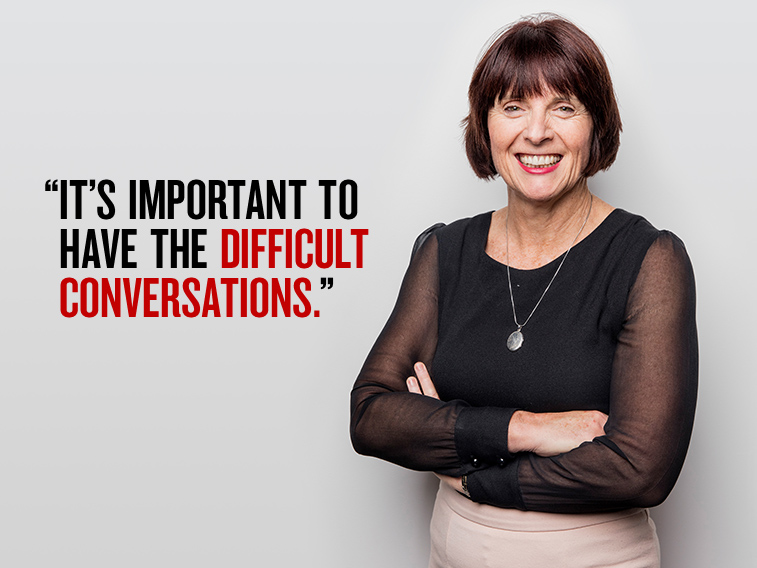On a seasonally adjusted basis, the NAB Online Retail Sales Index recorded a drop in growth in July


Insight
Rising demand, shrinking resources, vulnerable clients – we can’t keep ignoring the challenging business of healthcare for the elderly.

Aged care is in the process of transformation.
The first baby boomers are entering their seventies with profoundly different expectations, attitudes and preferences to those of earlier generations. And the demand for care continues to rise. The Department of Health estimates that the residential care sector will need to provide approximately 76,000 new places over the next 10 years – more than twice the number added over the previous decade. More people over 65 with fewer in the workforce is an expensive equation for providers.
But aged care is much more than the sum of its statistics. It’s about ensuring that all Australians have the dignity of choice, comfort and security in their later years.
The Salvation Army Aged Care Plus CEO Sharon Callister says that as a society, we need to give better access to care and more thought to future plans for ourselves and our families.
“It’s very important to have the difficult conversations about what we might need and how we can access the available services before we find ourselves in an emergency situation,” Callister says.
Increasingly, that discussion will include paying for the care.
“The government is committed to providing sustainable care for everyone, whether or not they can pay,” she says. “To help cover those costs, it’s aiming to increase contributions from consumers who have been assessed as able to afford it.”
Callister also believes that society must embrace the concept of healthy ageing.
“There are many aspects of ageing that we can’t control but there’s plenty of evidence that people with a healthy lifestyle are more likely to stay in good physical condition as they get older,” she says. “Physical activity can also support mental health so it’s vital that health education and appropriate opportunities for exercise are accepted as fundamental aspects of aged care.”
For leaders in the sector, this represents a range of complex challenges.
“Funding is a central concern for any organisation that depends on money from the government,” Callister says, citing the decision to freeze indexation for the Aged Care Funding Instrument (ACFI).
A freeze or reduction in funding is particularly hard on small providers.
“We’re continuing to see consolidation across the sector, with large providers buying up some smaller ones and some small providers exiting the sector because it’s becoming too difficult for them to operate,” Callister says. “Reform is also compounding the uncertainty. The government is still rolling out some reforms and others have yet to be clarified, so it’s tricky to predict the long-term impact.”
In 2014-15, more than 2,000 not-for-profit, for-profit and government service providers supplied aged care services to 1.3 million older Australians. These include services that help people live independently at home as well as in residential care.
“The Salvation Army Aged Care Plus operates 16 residential aged care centres, a respite and day centre, seven retirement villages and a range of home and community care programs that support older Australians in their own home,” Callister explains. “Most people want to stay at home as long as possible and, as these services are much less expensive than residential care, it makes sense for the government to focus on expanding this area.”
Helping people stay at home for longer is also having an impact on residential care.
“Our residents are a lot frailer and more vulnerable and their length of stay is generally shorter,” she says. “That’s been a key change over the past 10 or 20 years.”
These residents also require higher levels of care – and recruiting and retaining suitably qualified people is becoming a serious challenge.
“It can already be difficult to find the right staff – even management staff in some geographical areas,” Callister says. “As the cohort of elderly people continues to grow and the number of people replacing them in the workforce continues to fall, the pressure is bound to increase.”
As the government works on ways to attract people into aged care, individual providers are striving to establish themselves as employers of choice.
“Aged care is a very rewarding career but it can also be tough,” Callister says. “We position ourselves well in the market within the limits of what we can pay under our enterprise agreement, and we also spend a lot of time working on ways to ensure our employees feel valued. For example, we have a scholarship program, provide education and training, and offer very flexible working arrangements.
“Some people are surprised to hear that as a not-for-profit organisation, we still need to generate a surplus in order to survive,” she adds. “As providers, we all need to aspire to provide the very best in care for some of the most vulnerable people in our society.”
© National Australia Bank Limited. ABN 12 004 044 937 AFSL and Australian Credit Licence 230686.